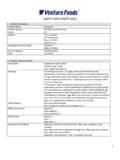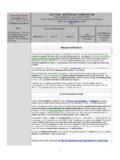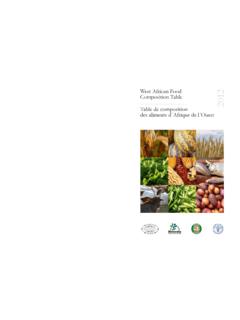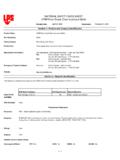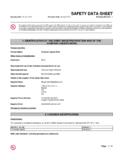Transcription of ALMOND COMPOSITION - California Almonds
1 BACKGROUND The Department of Agriculture (USDA) has been responsible for analyzing the nutrient content of the nation s food supply for over 120 years. The first food COMPOSITION tables were published in 1891 by Atwater and Woods, who compiled the water, fat, protein, ash and carbohydrate contents of approximately 200 different foods. Today, the USDA National Nutrient Database for Standard Reference (SR) contains data for more than 8,100 foods and up to 146 food components. It is the major source of food COMPOSITION data in the and provides the foundation for most public and private sector food COMPOSITION databases.
2 The SR also is recognized globally as a resource for food COMPOSITION 1992, updated data have been published electronically on the USDA Nutrient Data Laboratory (NDL) website. An updated version of the database is now released annually. The current release (SR25) was issued in September 2012 and can be accessed at: SR25 has adopted the LanguaL thesaurus food classification system, which provides a standardized language for describing foods and permits harmonization of food description terms across food COMPOSITION databases in other countries.
3 Nutrient data for specific foods or products can be submitted to the USDA by the food industry, government agencies and other sources. ALMOND COMPOSITION DATA IN THE SR DATABASE ALMOND Board of California (ABC) is committed to submitting high-quality nutrient data for California Almonds to USDA for consideration. Since 1999, ALMOND COMPOSITION data in the USDA SR have been regularly updated based on nutrient data submissions from ABC. Analysis of ALMOND samples is contracted out by ABC to independent testing laboratories in the that are accredited according to ISO/IEC 17025 standards of the International Organization for Standardization/ International Electrotechnical Commission (ISO/IEC) for the majority of analyses carried out.
4 Each sample is analyzed for a comprehensive range of macronutrients, micronutrients and, in some cases, major phytosterols. When ABC submits ALMOND nutrient data sets, USDA also requests the following specific information: Analytical information (test date, laboratory name/location, analytical methods used) Sampling strategy (sample origin, number of samples tested) Marketing data (product identification) Production statistics (variety specific, as a percentage of total annual crop)Electronic data are preferred, and submitted data are checked for accuracy against hard copy laboratory reports.
5 Once the data are verified, a proprietary algorithm is used to achieve a market basket nutrient set. This market-basket approach adjusts for sampling, differences among varieties, percentage of each variety produced and other factors to best represent the overall nutrient profile of the item that is purchased by consumers across the throughout the year. HISTORY OF ABC CONTRIBUTIONS TO USDA SR DATABASE1999: ABC collaborated with the International Tree Nut Council in 1998 to analyze the major California ALMOND varieties obtained from all of the commercial growing regions of California s Central Valley.
6 Nutrient data for whole kernels and forms were submitted to USDA and the SR was updated in (SR20): ABC submitted 84 comprehensive nutrient data sets for natural (with skin) Almonds of nine major California varieties. 2010 (SR23): ABC submitted 16 nutrient data sets for blanched (whole, sliced and slivered) and dry-roasted Almonds . 2013: ABC submitted 14 nutrient data sets for natural (with skin) ALMOND kernels and 12 nutrient data sets for dry-roasted Almonds for the database update in late 2013 (SR26). ALMOND COMPOSITION 2013 ALMOND Board of California .
7 All rights ALMOND FORMS1 UNITSNATURAL2 BLANCHED3 OIL ROASTED SALTED4 OIL ROASTED UNSALTED5 DRY ROASTED SALTED6 DRY ROASTED (total) fibre (total) (total) (Ca)mg264236291291267267 Iron (Fe) (Mg)mg268268274274281281 Phosphorus (P)mg484481466466470470 Potassium (K)mg705659699699712712 Sodium (Na)mg11933916563 Zinc (Zn) (Cu) (Mn) E (alpha-tocopherol) , foodmcg504927275353 FATTY ACIDSS aturated (total) 16:0 18:0 (total) 16:1 18:1 (total) 18:2 NUTRIENT COMPARISON (/100G) 1. USDA National Nutrient Database for Standard Reference website: USDA SR25 Nutrient Database No.
8 12061 Nuts, Almonds , USDA SR25 Nutrient Database No. 12062 Nuts, Almonds , USDA SR25 Nutrient Database No. 12565 Nuts, Almonds , oil roasted, with salt USDA SR25 Nutrient Database No. 12065 Nuts, Almonds , oil roasted, without salt USDA SR25 Nutrient Database No. 12563 Nuts, Almonds , dry roasted, with salt USDA SR25 Nutrient Database No. 12063 Nuts, Almonds , dry roasted, without salt added.





